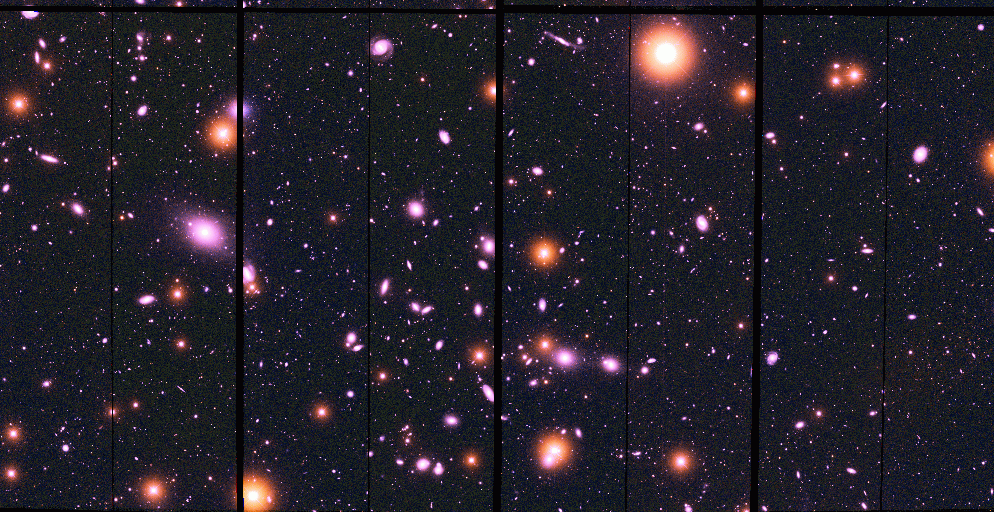|
The data can be downloaded
as an ascii file from here.
 The Abell 0168 Cluster, part of one of our ESSENCE fields.
The Abell 0168 Cluster, part of one of our ESSENCE fields.
Image credit: Peter Challis
|
These data are a combination of the ESSENCE, SNLS and nearby supernova data reported in Wood-Vasey et al. (2007) and the Higher-z data reported in Riess et al. (2007).
These were combined for Davis et al. (2007) and the data are provided in an ascii file in three columns, redshift, distance modulus and uncertainty in the distance modulus.
Please cite Davis et al. (2007), Wood-Vasey et al. (2007) and Riess et al. (2007) if making use of these data. The details are given below.
Combining the supernova data from Wood-Vasey et al. (2007, astro-ph/0701041) and the new Gold dataset from Riess et al. (2007, astro-ph/0611572 ) in a fully consistent way would require that these are simultaneously fit in the same manner as the local sample using the same lightcurve fitter (such as MLCS2k2).
Contacts:
Tamara Davis, tamarad@physics.uq.edu.au
Edvard Mörtsell, edvard@astro.su.se
|